This week, we’re going to be looking at an issue of running form that’s relevant to just about everybody – how to run with more power.
One very common mistake, or perhaps misconception, about how to run is exactly where the “power” in your stride comes from. Most people picture power being generated in the running stride when the foot pushes off the ground, which is correct. But in the mental image that most people carry with them, that “push” comes from the quads, much like a leg press.
While it’s true that a good deal of power in the running stride comes from extending your knee with your quads, this mental image of running power leaves out a major contributor: the hips. We’ve already seen in weeks past that runners are notorious for having weak hip muscles, but this week our focus isn’t the lateral stability muscles; it is on the hip extensor muscles, which (as you might guess) straighten your leg about the hip.
How the hip extensor muscles help you run with more power
If, for example, you looked at your watch and saw 2:53:40 with one mile to go in a marathon, you’d start driving your legs and pushing off harder each stride to try to sneak under the three-hour mark. Generating power at the quads is fine, but focusing on that to the exclusion of hip power proves to be a big problem.
When you drive hard with your quads on the leg that is pushing off, you’re inevitably going to be “reaching” forward with your other leg, which is still swinging through the air. When that leg hits the ground, your knee will be excessively extended and your foot will be landing further in front of your body. This, of course, is overstriding, and you can’t start pushing off again until that foot is behind your center of gravity (at your navel or thereabouts), so that time spent waiting is essentially wasted.
In the pictures below, you can see a moderate and an egregious example of this problem. Since the foot lands so far in front of the body, a heelstrike is pretty much mandatory, but the footstrike is not so much the problem as is the position of the foot relative to the body.
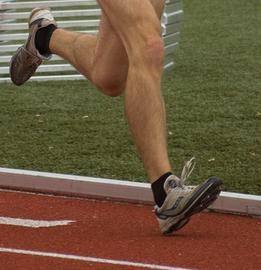
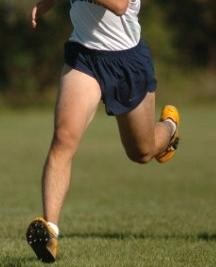
The issue, of course, is that if you try to shorten your stride, you won’t be generating as much power! Fortunately, there is a way to generate long, powerful strides without reaching forward with your lower leg and overstriding, and that is by focusing on hip drive.
A strong drive backwards using the hip muscles to extend the leg and “drive” into the ground will provide a good increase in stride length without the concomitant increase in overstriding. If you take a look at the glute max muscles on a sprinter, this should be no surprise! It’s no accident that sprinters have some serious muscle in their rears for propelling them forward at ten meters per second or faster.
Hip drive and knee lift
It is also important to remember that hip drive is inextricably linked to knee lift. Just like the arms and legs essentially “drive” one another across the body (if you don’t believe me, try running same arm/same leg some time!), the legs also communicate during the stride cycle. That is, if you drive your knee higher during the “swing” phase, your opposite hip will necessarily drive back further, and the converse is also true.
Generating hip drive is also a concern for runners with a very short, quick stride. When these “choppy stride” runners try to accelerate, they often find their speed and ability to change gears during a workout or race is limited by their cadence—since their default gait already uses a very high stride frequency, they can’t increase it any more to speed up! These kinds of runners tend to terminate their stride a bit early, giving the appearance of a quick “lifting” of the foot off the ground instead of a good drive with the knee straight and the ankle plantarflexed. Learning how to increase stride length by generating more power from the hips is a big help if you are a “choppy” runner.
How to improve hip drive for a more powerful stride
Since hip drive is most important when you are running fast or trying to accelerate, it makes the most sense to practice it while actually moving at a fast pace. Doing a set of 4-6 100m strides a few times a week is a good idea for all runners, and they are a great time to work on the various aspects of your gait that need improvement.
What I like to do is focus a few of the individual 100m repeats on creating power through hip drive, then focusing on a different aspect for the other repeats. So, for example, if I was doing six 100m strides, I might focus on driving my hips back and lifting my knees up on #1, 3, and 5, but focus on having a quick stride or balanced upper body (topics for another day) on # 2, 4, and 6. Once you practice this for a while, it will translate pretty easily into your longer repeats and other workouts.
Want more helpful form drills and strength exercises to help improve your running? Get our new strength training for runners course. We have 18 running-specific routines (with video and .pdf demonstrations) as well as step-by-step prescriptions for how and when to include strength training in your schedule. Get your copy now!
A running stride with a grossly exaggerated hip drive is exactly what a bound is, so inserting some bounding into your weekly training can also help train hip drive. Doing some skipping (for maximum height and distance) is good too. Both of these are high-impact exercises, though, so don’t jump into them right away if you don’t have good leg strength. You can start with one set of 50m of bounding and skipping once or twice a week, then increase it to two or even three sets if you’d like. Just make sure to do them on grass, not concrete.
Why hip drive is important
While not so much an injury concern, an inability to generate power at the hips is an affliction that comes with a serious performance detriment, particularly when it’s time to kick it into high gear in a race. Your ability to move fast hinges upon your capacity to direct force into the ground, and neglecting the component of that force that comes from the hip extensor muscles is short-changing your stride.
Improving your hip drive should give you noticeably more “pop” in your stride when you are running fast, and might save the day in a final-straight sprint. Focusing on hip drive when doing your strides and possibly incorporating some bounding and skipping a few times a week will go a long ways towards improving your ability to generate power from the hips.



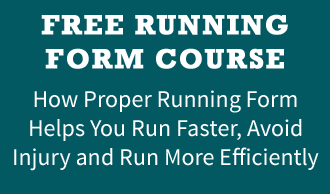


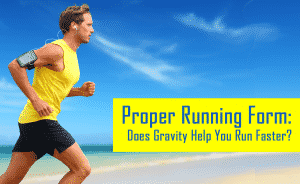
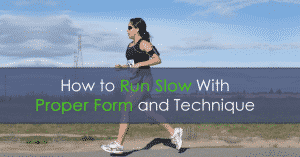

4 Responses
you website is really helpful,its easy to note the stride pattern
thanks just the level of detail needed great article 🙂
Glad we could help Roger!
I ran yesterday focusing on a high knee drive and could feel the difference as my running was faster and had much more power. The problem is I found that I landed on the ball of my foot a lot and developed blisters. Is this a technique error or just my foot not used to landing on the ball and running this way?